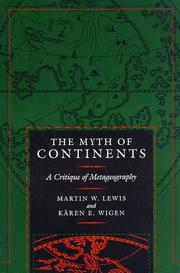| Listing 1 - 2 of 2 |
Sort by
|
Multi
ISBN: 9781107054530 1107054532 9781107294332 9781107665385 1316315908 1316322602 1316309223 1316329283 1316332624 1107665388 1316325946 1316319245 1107294339 1316288498 Year: 2015 Publisher: Cambridge Cambridge University Press
Abstract | Keywords | Export | Availability | Bookmark
 Loading...
Loading...Choose an application
- Reference Manager
- EndNote
- RefWorks (Direct export to RefWorks)
Over the past decade, a group of prolific and innovative evolutionary biologists has sought to reinvent historical linguistics through the use of phylogenetic and phylogeographical analysis, treating cognates like genes and conceptualizing the spread of languages in terms of the diffusion of viruses. Using these techniques, researchers claim to have located the origin of the Indo-European language family in Neolithic Anatolia, challenging the near-consensus view that it emerged in the grasslands north of the Black Sea thousands of years later. But despite its widespread celebration in the global media, this new approach fails to withstand scrutiny. As languages do not evolve like biological species and do not spread like viruses, the model produces incoherent results, contradicted by the empirical record at every turn. This book asserts that the origin and spread of languages must be examined primarily through the time-tested techniques of linguistic analysis, rather than those of evolutionary biology.
Indo-European languages --- Evolution. Phylogeny --- Historical linguistics --- Indoeuropeiska språk --- Språkhistoria --- Indo-Europeans --- Historical linguistics. --- Linguistic analysis (Linguistics) --- Evolution (Biology) --- Phylogeny. --- Phylogeography. --- Bayesian statistical decision theory. --- forskning --- Study and teaching. --- Research. --- Migrations. --- Origin. --- Språkhistoria. --- Linguistic analysis (Linguistics). --- Evolution (Biology). --- forskning. --- Forskning. --- Phylogeny --- Phylogeography --- Bayesian statistical decision theory --- Study and teaching --- Research --- Origin --- Migrations --- Indo-European languages - Study and teaching --- Indo-European languages - Research --- Indo-Europeans - Origin --- Indo-Europeans - Migrations --- Aryan languages --- Indo-Germanic languages --- Analysis, Linguistic (Linguistics) --- Analysis (Philosophy) --- Grammar, Comparative and general --- Diachronic linguistics --- Dynamic linguistics --- Evolutionary linguistics --- Language and languages --- Language and history --- Linguistics --- Animal phylogeny --- Animals --- Phylogenetics --- Phylogeny (Zoology) --- Biology --- Animal evolution --- Biological evolution --- Darwinism --- Evolutionary biology --- Evolutionary science --- Origin of species --- Evolution --- Biological fitness --- Homoplasy --- Natural selection --- Aryans --- Civilization, Aryan --- Civilization, Indo-European --- Indo-Germanic peoples --- Caucasian race --- Ethnology --- Bayes' solution --- Bayesian analysis --- Statistical decision --- Biogeography --- History

ISBN: 1280080256 9786613520241 0520918592 9780520918597 0520207424 9780520207424 0520207432 9780520207431 Year: 1997 Publisher: Berkeley University of California Press
Abstract | Keywords | Export | Availability | Bookmark
 Loading...
Loading...Choose an application
- Reference Manager
- EndNote
- RefWorks (Direct export to RefWorks)
In this thoughtful and engaging critique, geographer Martin W. Lewis and historian Kären Wigen reexamine the basic geographical divisions we take for granted, and challenge the unconscious spatial frameworks that govern the way we perceive the world. Arguing that notions of East vs. West, First World vs. Third World, and even the sevenfold continental system are simplistic and misconceived, the authors trace the history of such misconceptions. Their up-to-the-minute study reflects both on the global scale and its relation to the specific continents of Europe, Asia, and Africa-actually part of one contiguous landmass.The Myth of Continents sheds new light on how our metageographical assumptions grew out of cultural concepts: how the first continental divisions developed from classical times; how the Urals became the division between the so-called continents of Europe and Asia; how countries like Pakistan and Afghanistan recently shifted macroregions in the general consciousness.This extremely readable and thought-provoking analysis also explores the ways that new economic regions, the end of the cold war, and the proliferation of communication technologies change our understanding of the world. It stimulates thinking about the role of large-scale spatial constructs as driving forces behind particular worldviews and encourages everyone to take a more thoughtful, geographically informed approach to the task of describing and interpreting the human diversity of the planet.
Geographical perception. --- Geopolitics. --- World politics --- Environmental perception --- Maps, Mental --- Mental maps --- Perceptual cartography --- Perceptual maps --- Perception --- Orientation (Psychology) --- Space perception --- Geography --- Perception géographique --- Géographie --- History --- Histoire --- Geodesy. Cartography --- History as a science --- Geografie --- Sociale en economische geografie --- Algemeen. --- Geographical perception --- academic. --- afghanistan. --- analysis. --- asia. --- cold war. --- continental divide. --- continents. --- criticism. --- critique. --- economic. --- economy. --- europe. --- first world. --- geographical. --- geography. --- global. --- government. --- historian. --- historical. --- international issues. --- international. --- law and order. --- macroregions. --- misconception. --- myth. --- pakistan. --- philosophy. --- regional. --- scholarly. --- third world. --- world issues.
| Listing 1 - 2 of 2 |
Sort by
|

 Search
Search Feedback
Feedback About UniCat
About UniCat  Help
Help News
News